-
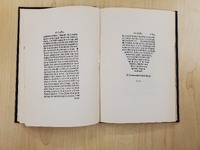 A Boke or Counseill Against the Disease Called the SWEATE
A Boke or Counseill Against the Disease Called the SWEATE John Caius, the famed English physician, wrote this short volume after witnessing “an epidemic of the sweating sickness at Shrewbury in 2551” (p.x). This book is the primary history source of information on the mysterious sweating sickness, which struck Europe in short and highly fatal outbreaks from 1485 to roughly 1551. Caius describes the symptoms of the disease, with miasmic speculation on its causes. He then discusses prevention and potential remedies, with recommendations that include returning to pre-urban hardiness and “quiet living.” This edition contains an introduction and facsimile.
-
 A Medieval Herbal: A Facsimile of British Library Egerton - MS 747
A Medieval Herbal: A Facsimile of British Library Egerton - MS 747 This herbal can be traced back to the Naples/Salerno region in the late 13th or early 14th-century. The Egerton 747 copy is the first surviving (and potentially the original) copy of this treatise, titled Tractatus de Herbis. This volume contains a compilation of botanical knowledge from Greek, Roman, and Arabic sources—alongside an impressive and unusually high number of illustrations and paintings. This full-color facsimile is the first reproduction of this manuscript.
-
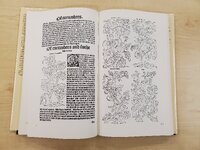 A New Herball: Part I
A New Herball: Part I William Turner, the naturalist, has been recognized by historians as the “father of English botany.” His volumes of A New Herball are revolutionary in their accessibility—recognized as one of the first botanical reference guides for physicians in English. These volumes gave the first clear, systematic survey of English plants, presented with woodcuts and detailed fieldnotes. Turner’s inclusion of the plants’ "uses and vertues" led to accusations among his contemporaries that he irresponsibly made medical information intended for physicians available to the general public. These editions include an introduction, facsimiles of Turner’s work, transcripts in Modern English, editors’ notes, indexes, and a glossary of now-obsolete words.
-
 Armamentarium Chirurgicum
Armamentarium Chirurgicum Armamentarium Chirurgicum was created by Johannes Scultetus, one of the best known 17th-century German surgeons. This book was published posthumously by his nephew from Scultetus’ notes. It details surgical techniques and instrumentation, including a number of techniques pioneered by Scultetus himself. This edition contains black and white illustrations and limited publication notes.
-
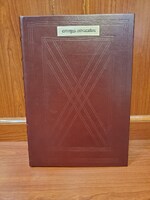 Codex Vindobonensis S.N. 2641 – Chirurgia
Codex Vindobonensis S.N. 2641 – Chirurgia Codex Vindobonensis S.N. 2641, the illuminated manuscript held by Österreichische Nationalbibliothek in Vienna, was created in Southern Italy in the second quarter of 14th century. It was written by Abu´l Qasim Halaf ibn Abbas al-Zahrawi, the court physician to the Caliph al-Hakam II in 9th century and translated from Arabic to Latin by Gerard of Cremona in 12th-century. Al-Zahrawi is known as the greatest surgeon of the Middle Ages: he introduced 200 surgical instruments, used ligature for bleeding vessels, described ectopic pregnancy and his translated work on surgery became the standard textbook for the next 500 years. The manuscript is adorned by 68 miniatures showing different surgical procedures, and also includes spectacular gilded initials.
-
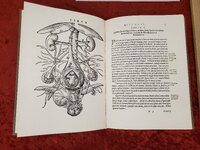 De Conceptu, et Generatione Hominis
De Conceptu, et Generatione Hominis Jakob Rüff, the 16th-century physician, published De Conceptu in 1554. The book is a practical manual for midwifery, and quickly became a critical guide of midwives operating in Zurich. De Conceptu was republished for over a century after Rüff’s death, with wide use in Germany, Amsterdam, and England. This facsimile is printed in Latin, with limited publication notes.
-
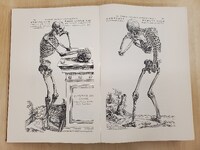 De Humani Corporis Fabrica
De Humani Corporis Fabrica This book was written by Andreas Vesalius, a 16th-century physician recognized as one of the founders of modern human anatomy. Originally published as seven books, this medical atlas on human anatomy is based on Vesalius’ Paduan lectures, during which he broke convention by dissecting a corpse to demonstrate what he was discussing. (At the time, dissection was considered a kind of manual labor beneath a doctor of medicine.) This was made even more controversial by the Church’s 16th-century ban on dissection—driving Vesalius to have to secretly take the bodies of executed criminals for his demonstrations. More than 700 copies of the 16th-century manuscripts remain, including one held at the John Hay Library at Brown University bound in tanned human skin. This edition is a collected volume, with facsimile printed in Latin.
-
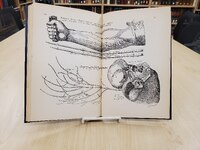 De Venarum Ostiolis
De Venarum Ostiolis In this book, the 16th-century Italian surgeon Hieronymus Fabricius ab Aquapendente illustrates and details veins and valves. While Fabricius did not discover vein valves, his writing in De Venarum Ostiolis contains their earliest known detailed description. This book was highly influential to the work of William Harvey, an English physician who was the first to recognize the full circulation of the blood in the human body. This edition contains a biographical introduction, facsimile with reproductions of its original plates, and notes on the size of these plates.
-
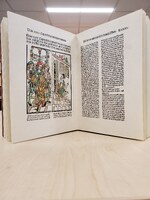 Dis ist das Buch der Cirurgia
Dis ist das Buch der Cirurgia This book was written by Hieronymus Brunschwig, a 15th-century surgeon noted for his methods for treating gunshot wounds. While not the most famous of his works, Dis ist das Buch der Cirurgia is the first printed German text on general practices for independent surgeons—and includes one of the earliest detailed descriptions of treating gunshot wounds. This facsimile contains color illustrations, with limited publication notes.
-
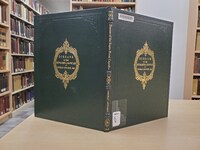 Disease of the Supra-Renal Capsules
Disease of the Supra-Renal Capsules The English physician Thomas Addison, one of the founders of modern endocrinology, published Disease of the Supra-Renal Capsules in 1855. This book contains Addison’s first writings on Addison’s Disease, a rare long-term endocrine disorder. Addison details the symptoms of this disease through writings on 11 potential cases, followed by full-color plates of patients exhibiting symptoms. This facsimile contains limited alterations from reproduction, with an attached booklet of editors’ notes in the back cover instead of in-book writing.
-
 Feldbuch der Wundarzney
Feldbuch der Wundarzney Hans von Gersdorff wrote Feldbuch der Wundarzney (which translates to ‘Field book of Surgery’) during his 40 year career as a military surgeon. In that time, he allegedly performed nearly 200 amputations. The book details practical instructions in the care and treatment of the wounded, with woodcuts attributed to Hans Wechtlin. These illustrations remain notable, including the often-reproduced Der verwundete Mann (‘The Wounded Man’)—originally published in The Fasciculus Medicinae. This facsimile is printed in black in white, with limited publishing notes.
-
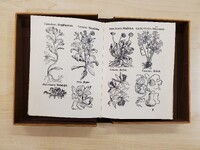 Herbarum Imagines Vivae
Herbarum Imagines Vivae Herbarum Imagines Vivae was created by the German printer Christian Egenolff. It primarily contains illustrations of living plants, with an included index. This book served as a field guide for identifying plants, as well as a guide to determine some of the plants’ uses as remedies. Egenolff was sued by Johannes Schott in 1533 over alleged copyright infringement in Herbarum Imagines Vivae—however, Egenolff argued that nature could not be copyrighted and that all artists were free to use any plant as a model. This black and white facsimile comes in a velour-lined sheepskin box, and contains no publishing or editorial notes in its reproduction.
-
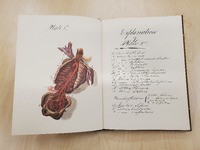 Manuscript of Drawings of the Arteries
Manuscript of Drawings of the Arteries This manuscript was created by the decorated Scottish surgeon and anatomist, Sir Charles Bell. Bell published a number of medical texts in his lifetime, and was known for his intricate and beautifully crafted illustrations. Engravings of the Arteries, as it was originally titled, contains detailed anatomical drawings with labels and short explanations. It is part of a three book series by Bell, which also includes the books Engravings of the Brain and Engravings of the Nerves. This facsimile has been reproduced with color illustrations. Included is a booklet containing biographical context as well as further information on the watercolor plates shown in the manuscript.
-
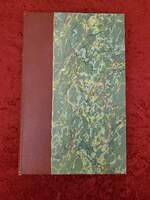 Myographia Nova, or, A Description of All the Muscles in Humane Body, as They Arise in Dissection
Myographia Nova, or, A Description of All the Muscles in Humane Body, as They Arise in Dissection Myographia Nova was published by the 17th-century surgeon John Browne in 1681. Organized into six lectures, Browne’s writing is accompanied by copper-plate illustrations. However, after the second edition was printed the surgeon James Yonge discovered that the book was plagarized: with text from William Molins's Muskotomia and plates from the 1632 edition of Giulio Casserius' Tabula anatomicae. Despite this, the book remained popular. This edition is printed with limited publication notes.
-
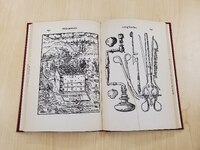 Profitable and Necessarie Booke of Observations
Profitable and Necessarie Booke of Observations This book is a revised reprint that combines two early medical writings of the surgeon William Clowes, with additional case histories. More primarily based on Clowes’ 1588 book A Prooved Practice, Clowes utilized this edition to expand upon his descriptions of experiences treating war wounds and veneral disease—particularly syphilis. It is the final text Clowes published in his lifetime. This reproduction contains an introduction and a medical introduction as well as the facsimile.
-
 Sloane MS 1977 - A medical anthology including Roger Frugardi's Chirurgia
Sloane MS 1977 - A medical anthology including Roger Frugardi's Chirurgia Chirurgia—the longest text in this anthology—was written by the Lombard surgeon Roger Frugardi in 1170. It was translated into French in the first quarter of 14th century. Since there are no references to the illustrations in the text and the text is very descriptive, it suggests that Frugardi did not plan to include illustrations. The Sloane manuscript held by the British Library is illustrated. It is also unique in that each illuminated page includes 9 miniatures: the three top ones are biblical in nature, while the remaining six are medical. This unusual combination of biblical and surgical scenes puzzles researchers until this day. Based on stylistic features of miniatures, some attribute them to the artist active in Picardy around 1340, known as “Master of Sainte Benoîte,” but some argue that they were done by the artist from Amiens.
-
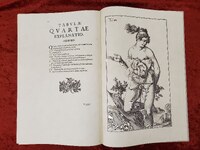 Tabulae anatomicae: De Formato Foetu Tabulae
Tabulae anatomicae: De Formato Foetu Tabulae This book was created by the 16th-century Italian anatomist Giulio Cesare Casseri and published posthumously. De Formato Foetu Tabulae is an accompanying volume to his book, Tabulae Anatomicae. These volumes make up a medical atlas, with particular attention to the muscles. At the time, Tabulae Anatomicae was though to be a wholly complete medical atlas of the human body. This edition contains extensive illustrations and limited publication notes.
-
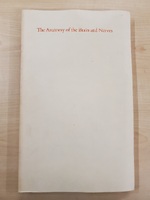 The Anatomy of the Brain and Nerves (1965 Edition)
The Anatomy of the Brain and Nerves (1965 Edition) This book was created by Thomas Willis, an English physician who was a founding member of the Royal Society as well as a pioneer in research into the anatomy of the brain. His work marks the transition between medieval and modern notions of brain function. His anatomical illustrations detail the brain and the cranial, spinal, and autonomic nerves. This tercentenary edition comes in two volumes: the first containing biography notes and an introduction, and the second containing the facsimile.
-
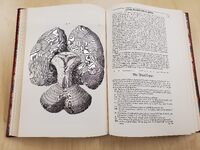 The Anatomy of the Brain and Nerves (1978 Edition)
The Anatomy of the Brain and Nerves (1978 Edition) This later printing of Feindel’s facsimile comes in one volume, and contains an introduction with biographical information on Willis, facsimile with fold-out illustrations, and a booklet of editor notes.
-
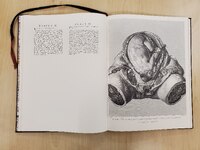 The Anatomy of the Human Gravid Uterus
The Anatomy of the Human Gravid Uterus The Anatomy of the Human Gravid Uterus was created by the 18th-century British physician and medical writer, William Hunter—who is recognized for his work to formalize the field of obstetrics as a branch of medicine. This book is an anatomical atlas of pregnancy and fetal health. Hunter pairs engravings of pregnant bodies with descriptions in English and Latin. This edition contains limited notes or alterations by the publisher, with editor’s notes included in an attached booklet.
-
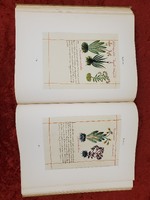 The Badianus Manuscript
The Badianus Manuscript This manuscript is the earliest known writing on medicinal practices and treatment of diseases from Mexico. Written and translated by indigenous Aztec people, this illustrated volume depicts and describes the use of medicinal plants to treat various illnesses. This emphasis on pharmaceutical interventions through medicinal plants is noteworthy—which author Martin de la Cruz demonstrates rather than a reliance on surgical treatments. This volume contains an introduction, color facsimile, and annotated translation into English (from Latin).
-
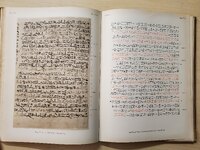 The Edwin Smith Surgical Papyrus
The Edwin Smith Surgical Papyrus The Edwin Smith Surgical Papyrus is an Ancient Egyptian medical text. Thought to be a military surgery manual, it is the oldest known surgical writing on trauma and contains the first written example of a word for the brain. The text utilizes rational and scientific approaches, standing out against other medical papyri that rely more heavily on concepts of magic to explain medical phenomena. Black and white reproductions of the original columns are paired in spreads with hieroglyphic transliteration.
-
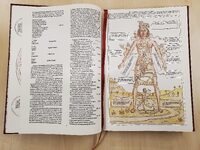 The Fasciculus Medicinae of Johannes de Ketham
The Fasciculus Medicinae of Johannes de Ketham Fasciculus Medicinae is a collection of six medieval medical writings edited by Joannes de Ketham, a 15th-century German physician. This book is the most well-known piece of Ketham’s work—recognized as the first printed book to contain medical illustrations. This edition contains a facsimile with color illustrations, an English translation with black and white illustrations, as well as an appendix with further notes and illustrations.
-
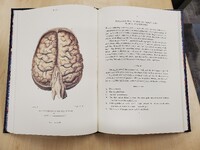 The Morbid Anatomy of the Human Brain
The Morbid Anatomy of the Human Brain Robert Hooper, the author of the original text, was a British physician and medical writer. He created The Morbid Anatomy of the Human Brain in 1826, making this book one of the first neuropathology atlases. This facsimile contains color illustrations of brain injuries and diseases—with short descriptions of the anatomy depicted.
-
 The Old English Illustrated Pharmacopoeia
The Old English Illustrated Pharmacopoeia This pharmacopoeia is an Old English translation of a group of medical documents originally written in Latin, potentially for common use rather than to strictly guide the work of physicians and apothecaries. This edition contains a detailed list of the manuscript’s contents with codicological and paleographic observations, notes on the history and usage of the manuscript, and black and white scans of manuscript pages (with some full-color illustrations).
 A Boke or Counseill Against the Disease Called the SWEATE John Caius, the famed English physician, wrote this short volume after witnessing “an epidemic of the sweating sickness at Shrewbury in 2551” (p.x). This book is the primary history source of information on the mysterious sweating sickness, which struck Europe in short and highly fatal outbreaks from 1485 to roughly 1551. Caius describes the symptoms of the disease, with miasmic speculation on its causes. He then discusses prevention and potential remedies, with recommendations that include returning to pre-urban hardiness and “quiet living.” This edition contains an introduction and facsimile.
A Boke or Counseill Against the Disease Called the SWEATE John Caius, the famed English physician, wrote this short volume after witnessing “an epidemic of the sweating sickness at Shrewbury in 2551” (p.x). This book is the primary history source of information on the mysterious sweating sickness, which struck Europe in short and highly fatal outbreaks from 1485 to roughly 1551. Caius describes the symptoms of the disease, with miasmic speculation on its causes. He then discusses prevention and potential remedies, with recommendations that include returning to pre-urban hardiness and “quiet living.” This edition contains an introduction and facsimile. A Medieval Herbal: A Facsimile of British Library Egerton - MS 747 This herbal can be traced back to the Naples/Salerno region in the late 13th or early 14th-century. The Egerton 747 copy is the first surviving (and potentially the original) copy of this treatise, titled Tractatus de Herbis. This volume contains a compilation of botanical knowledge from Greek, Roman, and Arabic sources—alongside an impressive and unusually high number of illustrations and paintings. This full-color facsimile is the first reproduction of this manuscript.
A Medieval Herbal: A Facsimile of British Library Egerton - MS 747 This herbal can be traced back to the Naples/Salerno region in the late 13th or early 14th-century. The Egerton 747 copy is the first surviving (and potentially the original) copy of this treatise, titled Tractatus de Herbis. This volume contains a compilation of botanical knowledge from Greek, Roman, and Arabic sources—alongside an impressive and unusually high number of illustrations and paintings. This full-color facsimile is the first reproduction of this manuscript. A New Herball: Part I William Turner, the naturalist, has been recognized by historians as the “father of English botany.” His volumes of A New Herball are revolutionary in their accessibility—recognized as one of the first botanical reference guides for physicians in English. These volumes gave the first clear, systematic survey of English plants, presented with woodcuts and detailed fieldnotes. Turner’s inclusion of the plants’ "uses and vertues" led to accusations among his contemporaries that he irresponsibly made medical information intended for physicians available to the general public. These editions include an introduction, facsimiles of Turner’s work, transcripts in Modern English, editors’ notes, indexes, and a glossary of now-obsolete words.
A New Herball: Part I William Turner, the naturalist, has been recognized by historians as the “father of English botany.” His volumes of A New Herball are revolutionary in their accessibility—recognized as one of the first botanical reference guides for physicians in English. These volumes gave the first clear, systematic survey of English plants, presented with woodcuts and detailed fieldnotes. Turner’s inclusion of the plants’ "uses and vertues" led to accusations among his contemporaries that he irresponsibly made medical information intended for physicians available to the general public. These editions include an introduction, facsimiles of Turner’s work, transcripts in Modern English, editors’ notes, indexes, and a glossary of now-obsolete words. Armamentarium Chirurgicum Armamentarium Chirurgicum was created by Johannes Scultetus, one of the best known 17th-century German surgeons. This book was published posthumously by his nephew from Scultetus’ notes. It details surgical techniques and instrumentation, including a number of techniques pioneered by Scultetus himself. This edition contains black and white illustrations and limited publication notes.
Armamentarium Chirurgicum Armamentarium Chirurgicum was created by Johannes Scultetus, one of the best known 17th-century German surgeons. This book was published posthumously by his nephew from Scultetus’ notes. It details surgical techniques and instrumentation, including a number of techniques pioneered by Scultetus himself. This edition contains black and white illustrations and limited publication notes. Codex Vindobonensis S.N. 2641 – Chirurgia Codex Vindobonensis S.N. 2641, the illuminated manuscript held by Österreichische Nationalbibliothek in Vienna, was created in Southern Italy in the second quarter of 14th century. It was written by Abu´l Qasim Halaf ibn Abbas al-Zahrawi, the court physician to the Caliph al-Hakam II in 9th century and translated from Arabic to Latin by Gerard of Cremona in 12th-century. Al-Zahrawi is known as the greatest surgeon of the Middle Ages: he introduced 200 surgical instruments, used ligature for bleeding vessels, described ectopic pregnancy and his translated work on surgery became the standard textbook for the next 500 years. The manuscript is adorned by 68 miniatures showing different surgical procedures, and also includes spectacular gilded initials.
Codex Vindobonensis S.N. 2641 – Chirurgia Codex Vindobonensis S.N. 2641, the illuminated manuscript held by Österreichische Nationalbibliothek in Vienna, was created in Southern Italy in the second quarter of 14th century. It was written by Abu´l Qasim Halaf ibn Abbas al-Zahrawi, the court physician to the Caliph al-Hakam II in 9th century and translated from Arabic to Latin by Gerard of Cremona in 12th-century. Al-Zahrawi is known as the greatest surgeon of the Middle Ages: he introduced 200 surgical instruments, used ligature for bleeding vessels, described ectopic pregnancy and his translated work on surgery became the standard textbook for the next 500 years. The manuscript is adorned by 68 miniatures showing different surgical procedures, and also includes spectacular gilded initials. De Conceptu, et Generatione Hominis Jakob Rüff, the 16th-century physician, published De Conceptu in 1554. The book is a practical manual for midwifery, and quickly became a critical guide of midwives operating in Zurich. De Conceptu was republished for over a century after Rüff’s death, with wide use in Germany, Amsterdam, and England. This facsimile is printed in Latin, with limited publication notes.
De Conceptu, et Generatione Hominis Jakob Rüff, the 16th-century physician, published De Conceptu in 1554. The book is a practical manual for midwifery, and quickly became a critical guide of midwives operating in Zurich. De Conceptu was republished for over a century after Rüff’s death, with wide use in Germany, Amsterdam, and England. This facsimile is printed in Latin, with limited publication notes. De Humani Corporis Fabrica This book was written by Andreas Vesalius, a 16th-century physician recognized as one of the founders of modern human anatomy. Originally published as seven books, this medical atlas on human anatomy is based on Vesalius’ Paduan lectures, during which he broke convention by dissecting a corpse to demonstrate what he was discussing. (At the time, dissection was considered a kind of manual labor beneath a doctor of medicine.) This was made even more controversial by the Church’s 16th-century ban on dissection—driving Vesalius to have to secretly take the bodies of executed criminals for his demonstrations. More than 700 copies of the 16th-century manuscripts remain, including one held at the John Hay Library at Brown University bound in tanned human skin. This edition is a collected volume, with facsimile printed in Latin.
De Humani Corporis Fabrica This book was written by Andreas Vesalius, a 16th-century physician recognized as one of the founders of modern human anatomy. Originally published as seven books, this medical atlas on human anatomy is based on Vesalius’ Paduan lectures, during which he broke convention by dissecting a corpse to demonstrate what he was discussing. (At the time, dissection was considered a kind of manual labor beneath a doctor of medicine.) This was made even more controversial by the Church’s 16th-century ban on dissection—driving Vesalius to have to secretly take the bodies of executed criminals for his demonstrations. More than 700 copies of the 16th-century manuscripts remain, including one held at the John Hay Library at Brown University bound in tanned human skin. This edition is a collected volume, with facsimile printed in Latin. De Venarum Ostiolis In this book, the 16th-century Italian surgeon Hieronymus Fabricius ab Aquapendente illustrates and details veins and valves. While Fabricius did not discover vein valves, his writing in De Venarum Ostiolis contains their earliest known detailed description. This book was highly influential to the work of William Harvey, an English physician who was the first to recognize the full circulation of the blood in the human body. This edition contains a biographical introduction, facsimile with reproductions of its original plates, and notes on the size of these plates.
De Venarum Ostiolis In this book, the 16th-century Italian surgeon Hieronymus Fabricius ab Aquapendente illustrates and details veins and valves. While Fabricius did not discover vein valves, his writing in De Venarum Ostiolis contains their earliest known detailed description. This book was highly influential to the work of William Harvey, an English physician who was the first to recognize the full circulation of the blood in the human body. This edition contains a biographical introduction, facsimile with reproductions of its original plates, and notes on the size of these plates. Dis ist das Buch der Cirurgia This book was written by Hieronymus Brunschwig, a 15th-century surgeon noted for his methods for treating gunshot wounds. While not the most famous of his works, Dis ist das Buch der Cirurgia is the first printed German text on general practices for independent surgeons—and includes one of the earliest detailed descriptions of treating gunshot wounds. This facsimile contains color illustrations, with limited publication notes.
Dis ist das Buch der Cirurgia This book was written by Hieronymus Brunschwig, a 15th-century surgeon noted for his methods for treating gunshot wounds. While not the most famous of his works, Dis ist das Buch der Cirurgia is the first printed German text on general practices for independent surgeons—and includes one of the earliest detailed descriptions of treating gunshot wounds. This facsimile contains color illustrations, with limited publication notes. Disease of the Supra-Renal Capsules The English physician Thomas Addison, one of the founders of modern endocrinology, published Disease of the Supra-Renal Capsules in 1855. This book contains Addison’s first writings on Addison’s Disease, a rare long-term endocrine disorder. Addison details the symptoms of this disease through writings on 11 potential cases, followed by full-color plates of patients exhibiting symptoms. This facsimile contains limited alterations from reproduction, with an attached booklet of editors’ notes in the back cover instead of in-book writing.
Disease of the Supra-Renal Capsules The English physician Thomas Addison, one of the founders of modern endocrinology, published Disease of the Supra-Renal Capsules in 1855. This book contains Addison’s first writings on Addison’s Disease, a rare long-term endocrine disorder. Addison details the symptoms of this disease through writings on 11 potential cases, followed by full-color plates of patients exhibiting symptoms. This facsimile contains limited alterations from reproduction, with an attached booklet of editors’ notes in the back cover instead of in-book writing. Feldbuch der Wundarzney Hans von Gersdorff wrote Feldbuch der Wundarzney (which translates to ‘Field book of Surgery’) during his 40 year career as a military surgeon. In that time, he allegedly performed nearly 200 amputations. The book details practical instructions in the care and treatment of the wounded, with woodcuts attributed to Hans Wechtlin. These illustrations remain notable, including the often-reproduced Der verwundete Mann (‘The Wounded Man’)—originally published in The Fasciculus Medicinae. This facsimile is printed in black in white, with limited publishing notes.
Feldbuch der Wundarzney Hans von Gersdorff wrote Feldbuch der Wundarzney (which translates to ‘Field book of Surgery’) during his 40 year career as a military surgeon. In that time, he allegedly performed nearly 200 amputations. The book details practical instructions in the care and treatment of the wounded, with woodcuts attributed to Hans Wechtlin. These illustrations remain notable, including the often-reproduced Der verwundete Mann (‘The Wounded Man’)—originally published in The Fasciculus Medicinae. This facsimile is printed in black in white, with limited publishing notes. Herbarum Imagines Vivae Herbarum Imagines Vivae was created by the German printer Christian Egenolff. It primarily contains illustrations of living plants, with an included index. This book served as a field guide for identifying plants, as well as a guide to determine some of the plants’ uses as remedies. Egenolff was sued by Johannes Schott in 1533 over alleged copyright infringement in Herbarum Imagines Vivae—however, Egenolff argued that nature could not be copyrighted and that all artists were free to use any plant as a model. This black and white facsimile comes in a velour-lined sheepskin box, and contains no publishing or editorial notes in its reproduction.
Herbarum Imagines Vivae Herbarum Imagines Vivae was created by the German printer Christian Egenolff. It primarily contains illustrations of living plants, with an included index. This book served as a field guide for identifying plants, as well as a guide to determine some of the plants’ uses as remedies. Egenolff was sued by Johannes Schott in 1533 over alleged copyright infringement in Herbarum Imagines Vivae—however, Egenolff argued that nature could not be copyrighted and that all artists were free to use any plant as a model. This black and white facsimile comes in a velour-lined sheepskin box, and contains no publishing or editorial notes in its reproduction. Manuscript of Drawings of the Arteries This manuscript was created by the decorated Scottish surgeon and anatomist, Sir Charles Bell. Bell published a number of medical texts in his lifetime, and was known for his intricate and beautifully crafted illustrations. Engravings of the Arteries, as it was originally titled, contains detailed anatomical drawings with labels and short explanations. It is part of a three book series by Bell, which also includes the books Engravings of the Brain and Engravings of the Nerves. This facsimile has been reproduced with color illustrations. Included is a booklet containing biographical context as well as further information on the watercolor plates shown in the manuscript.
Manuscript of Drawings of the Arteries This manuscript was created by the decorated Scottish surgeon and anatomist, Sir Charles Bell. Bell published a number of medical texts in his lifetime, and was known for his intricate and beautifully crafted illustrations. Engravings of the Arteries, as it was originally titled, contains detailed anatomical drawings with labels and short explanations. It is part of a three book series by Bell, which also includes the books Engravings of the Brain and Engravings of the Nerves. This facsimile has been reproduced with color illustrations. Included is a booklet containing biographical context as well as further information on the watercolor plates shown in the manuscript. Myographia Nova, or, A Description of All the Muscles in Humane Body, as They Arise in Dissection Myographia Nova was published by the 17th-century surgeon John Browne in 1681. Organized into six lectures, Browne’s writing is accompanied by copper-plate illustrations. However, after the second edition was printed the surgeon James Yonge discovered that the book was plagarized: with text from William Molins's Muskotomia and plates from the 1632 edition of Giulio Casserius' Tabula anatomicae. Despite this, the book remained popular. This edition is printed with limited publication notes.
Myographia Nova, or, A Description of All the Muscles in Humane Body, as They Arise in Dissection Myographia Nova was published by the 17th-century surgeon John Browne in 1681. Organized into six lectures, Browne’s writing is accompanied by copper-plate illustrations. However, after the second edition was printed the surgeon James Yonge discovered that the book was plagarized: with text from William Molins's Muskotomia and plates from the 1632 edition of Giulio Casserius' Tabula anatomicae. Despite this, the book remained popular. This edition is printed with limited publication notes. Profitable and Necessarie Booke of Observations This book is a revised reprint that combines two early medical writings of the surgeon William Clowes, with additional case histories. More primarily based on Clowes’ 1588 book A Prooved Practice, Clowes utilized this edition to expand upon his descriptions of experiences treating war wounds and veneral disease—particularly syphilis. It is the final text Clowes published in his lifetime. This reproduction contains an introduction and a medical introduction as well as the facsimile.
Profitable and Necessarie Booke of Observations This book is a revised reprint that combines two early medical writings of the surgeon William Clowes, with additional case histories. More primarily based on Clowes’ 1588 book A Prooved Practice, Clowes utilized this edition to expand upon his descriptions of experiences treating war wounds and veneral disease—particularly syphilis. It is the final text Clowes published in his lifetime. This reproduction contains an introduction and a medical introduction as well as the facsimile. Sloane MS 1977 - A medical anthology including Roger Frugardi's Chirurgia Chirurgia—the longest text in this anthology—was written by the Lombard surgeon Roger Frugardi in 1170. It was translated into French in the first quarter of 14th century. Since there are no references to the illustrations in the text and the text is very descriptive, it suggests that Frugardi did not plan to include illustrations. The Sloane manuscript held by the British Library is illustrated. It is also unique in that each illuminated page includes 9 miniatures: the three top ones are biblical in nature, while the remaining six are medical. This unusual combination of biblical and surgical scenes puzzles researchers until this day. Based on stylistic features of miniatures, some attribute them to the artist active in Picardy around 1340, known as “Master of Sainte Benoîte,” but some argue that they were done by the artist from Amiens.
Sloane MS 1977 - A medical anthology including Roger Frugardi's Chirurgia Chirurgia—the longest text in this anthology—was written by the Lombard surgeon Roger Frugardi in 1170. It was translated into French in the first quarter of 14th century. Since there are no references to the illustrations in the text and the text is very descriptive, it suggests that Frugardi did not plan to include illustrations. The Sloane manuscript held by the British Library is illustrated. It is also unique in that each illuminated page includes 9 miniatures: the three top ones are biblical in nature, while the remaining six are medical. This unusual combination of biblical and surgical scenes puzzles researchers until this day. Based on stylistic features of miniatures, some attribute them to the artist active in Picardy around 1340, known as “Master of Sainte Benoîte,” but some argue that they were done by the artist from Amiens. Tabulae anatomicae: De Formato Foetu Tabulae This book was created by the 16th-century Italian anatomist Giulio Cesare Casseri and published posthumously. De Formato Foetu Tabulae is an accompanying volume to his book, Tabulae Anatomicae. These volumes make up a medical atlas, with particular attention to the muscles. At the time, Tabulae Anatomicae was though to be a wholly complete medical atlas of the human body. This edition contains extensive illustrations and limited publication notes.
Tabulae anatomicae: De Formato Foetu Tabulae This book was created by the 16th-century Italian anatomist Giulio Cesare Casseri and published posthumously. De Formato Foetu Tabulae is an accompanying volume to his book, Tabulae Anatomicae. These volumes make up a medical atlas, with particular attention to the muscles. At the time, Tabulae Anatomicae was though to be a wholly complete medical atlas of the human body. This edition contains extensive illustrations and limited publication notes. The Anatomy of the Brain and Nerves (1965 Edition) This book was created by Thomas Willis, an English physician who was a founding member of the Royal Society as well as a pioneer in research into the anatomy of the brain. His work marks the transition between medieval and modern notions of brain function. His anatomical illustrations detail the brain and the cranial, spinal, and autonomic nerves. This tercentenary edition comes in two volumes: the first containing biography notes and an introduction, and the second containing the facsimile.
The Anatomy of the Brain and Nerves (1965 Edition) This book was created by Thomas Willis, an English physician who was a founding member of the Royal Society as well as a pioneer in research into the anatomy of the brain. His work marks the transition between medieval and modern notions of brain function. His anatomical illustrations detail the brain and the cranial, spinal, and autonomic nerves. This tercentenary edition comes in two volumes: the first containing biography notes and an introduction, and the second containing the facsimile. The Anatomy of the Brain and Nerves (1978 Edition) This later printing of Feindel’s facsimile comes in one volume, and contains an introduction with biographical information on Willis, facsimile with fold-out illustrations, and a booklet of editor notes.
The Anatomy of the Brain and Nerves (1978 Edition) This later printing of Feindel’s facsimile comes in one volume, and contains an introduction with biographical information on Willis, facsimile with fold-out illustrations, and a booklet of editor notes. The Anatomy of the Human Gravid Uterus The Anatomy of the Human Gravid Uterus was created by the 18th-century British physician and medical writer, William Hunter—who is recognized for his work to formalize the field of obstetrics as a branch of medicine. This book is an anatomical atlas of pregnancy and fetal health. Hunter pairs engravings of pregnant bodies with descriptions in English and Latin. This edition contains limited notes or alterations by the publisher, with editor’s notes included in an attached booklet.
The Anatomy of the Human Gravid Uterus The Anatomy of the Human Gravid Uterus was created by the 18th-century British physician and medical writer, William Hunter—who is recognized for his work to formalize the field of obstetrics as a branch of medicine. This book is an anatomical atlas of pregnancy and fetal health. Hunter pairs engravings of pregnant bodies with descriptions in English and Latin. This edition contains limited notes or alterations by the publisher, with editor’s notes included in an attached booklet. The Badianus Manuscript This manuscript is the earliest known writing on medicinal practices and treatment of diseases from Mexico. Written and translated by indigenous Aztec people, this illustrated volume depicts and describes the use of medicinal plants to treat various illnesses. This emphasis on pharmaceutical interventions through medicinal plants is noteworthy—which author Martin de la Cruz demonstrates rather than a reliance on surgical treatments. This volume contains an introduction, color facsimile, and annotated translation into English (from Latin).
The Badianus Manuscript This manuscript is the earliest known writing on medicinal practices and treatment of diseases from Mexico. Written and translated by indigenous Aztec people, this illustrated volume depicts and describes the use of medicinal plants to treat various illnesses. This emphasis on pharmaceutical interventions through medicinal plants is noteworthy—which author Martin de la Cruz demonstrates rather than a reliance on surgical treatments. This volume contains an introduction, color facsimile, and annotated translation into English (from Latin). The Edwin Smith Surgical Papyrus The Edwin Smith Surgical Papyrus is an Ancient Egyptian medical text. Thought to be a military surgery manual, it is the oldest known surgical writing on trauma and contains the first written example of a word for the brain. The text utilizes rational and scientific approaches, standing out against other medical papyri that rely more heavily on concepts of magic to explain medical phenomena. Black and white reproductions of the original columns are paired in spreads with hieroglyphic transliteration.
The Edwin Smith Surgical Papyrus The Edwin Smith Surgical Papyrus is an Ancient Egyptian medical text. Thought to be a military surgery manual, it is the oldest known surgical writing on trauma and contains the first written example of a word for the brain. The text utilizes rational and scientific approaches, standing out against other medical papyri that rely more heavily on concepts of magic to explain medical phenomena. Black and white reproductions of the original columns are paired in spreads with hieroglyphic transliteration. The Fasciculus Medicinae of Johannes de Ketham Fasciculus Medicinae is a collection of six medieval medical writings edited by Joannes de Ketham, a 15th-century German physician. This book is the most well-known piece of Ketham’s work—recognized as the first printed book to contain medical illustrations. This edition contains a facsimile with color illustrations, an English translation with black and white illustrations, as well as an appendix with further notes and illustrations.
The Fasciculus Medicinae of Johannes de Ketham Fasciculus Medicinae is a collection of six medieval medical writings edited by Joannes de Ketham, a 15th-century German physician. This book is the most well-known piece of Ketham’s work—recognized as the first printed book to contain medical illustrations. This edition contains a facsimile with color illustrations, an English translation with black and white illustrations, as well as an appendix with further notes and illustrations. The Morbid Anatomy of the Human Brain Robert Hooper, the author of the original text, was a British physician and medical writer. He created The Morbid Anatomy of the Human Brain in 1826, making this book one of the first neuropathology atlases. This facsimile contains color illustrations of brain injuries and diseases—with short descriptions of the anatomy depicted.
The Morbid Anatomy of the Human Brain Robert Hooper, the author of the original text, was a British physician and medical writer. He created The Morbid Anatomy of the Human Brain in 1826, making this book one of the first neuropathology atlases. This facsimile contains color illustrations of brain injuries and diseases—with short descriptions of the anatomy depicted. The Old English Illustrated Pharmacopoeia This pharmacopoeia is an Old English translation of a group of medical documents originally written in Latin, potentially for common use rather than to strictly guide the work of physicians and apothecaries. This edition contains a detailed list of the manuscript’s contents with codicological and paleographic observations, notes on the history and usage of the manuscript, and black and white scans of manuscript pages (with some full-color illustrations).
The Old English Illustrated Pharmacopoeia This pharmacopoeia is an Old English translation of a group of medical documents originally written in Latin, potentially for common use rather than to strictly guide the work of physicians and apothecaries. This edition contains a detailed list of the manuscript’s contents with codicological and paleographic observations, notes on the history and usage of the manuscript, and black and white scans of manuscript pages (with some full-color illustrations).